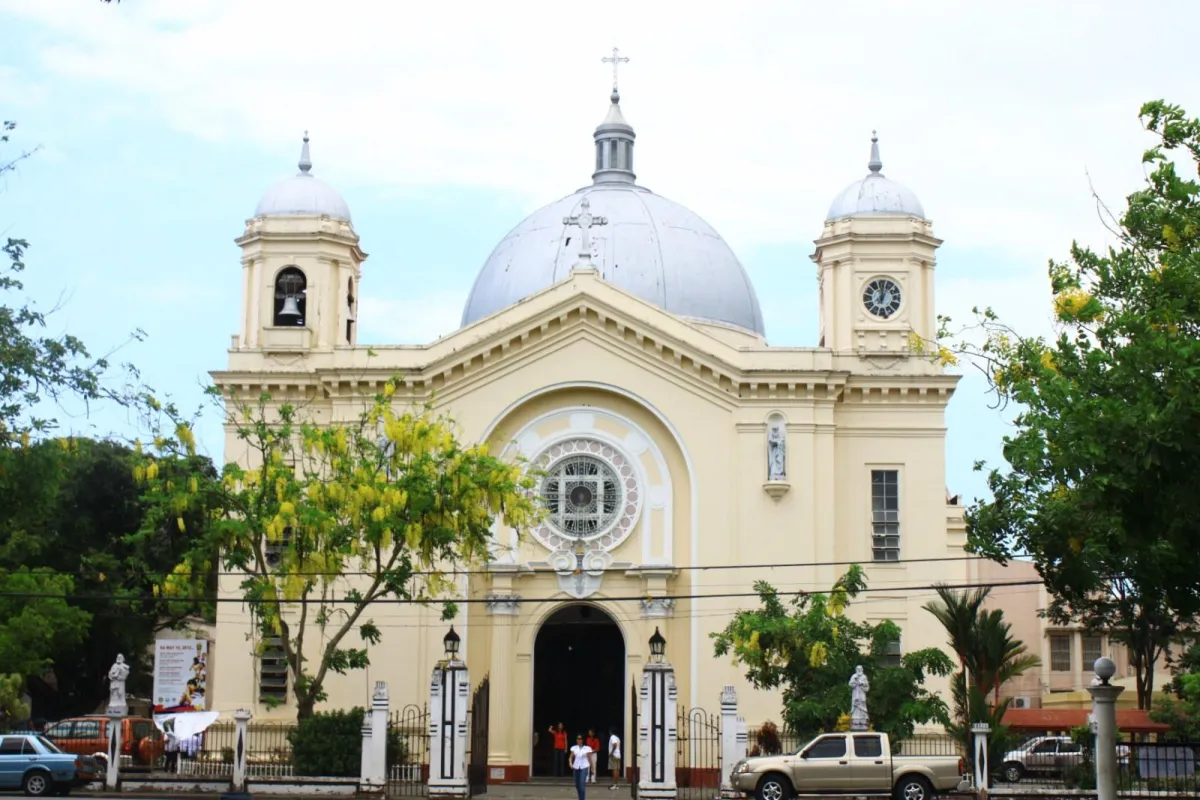⭕ SMART: 098 5973 7798 ⭕ GLOBE: 091 5874 9128 ⭕LANDLINE: 034 466 4554
The Paris Of Negros Occidental
In the picturesque town of Silay in Negros Occidental, known as the "Paris of Negros Occidental" for its well-preserved heritage houses and cultural richness, a remarkable culinary establishment emerged to bring the authentic flavors of Japan to the Philippines - Silayushi.
Silayushi, founded by a passionate and skilled chefs, sought to introduce the people of Silay and beyond to the true essence of Japanese cuisine. With a deep respect for tradition and an unwavering commitment to quality, the restaurant quickly gained a reputation for being the first and foremost authentic Japanese dining experience in the region.
The journey of Silayushi began with the chef's ambition to share his love for Japanese food, artfully combining the rich history and diverse culinary techniques of Japan with the vibrant local ingredients found in Negros Occidental. Drawing inspiration from the picturesque landscapes and serene surroundings, the chef infused each dish with creativity and a personal touch, making Silayushi a unique and memorable dining destination.
Introduction
In the heart of the Philippines lies the captivating city of Silay, often referred to as the "Paris of Negros." This moniker, which conjures images of romance and sophistication, seems an unlikely fit for a city in the tropics. Yet, as we embark on a journey through time, we will unveil the enigmatic origins and the rich tapestry of culture and history that have woven together to create the unique charm of Silay, earning it the title of the "Paris of Negros."
Chapter 1: The Indigenous Roots
Long before the arrival of Spanish colonizers, the region now known as Silay was inhabited by indigenous communities. These tribes, collectively known as the Negritos and the Atis, lived harmoniously with nature and possessed a deep understanding of the land they called home. Their existence left a profound imprint on the city's cultural heritage, seen in the customs, dialects, and traditions that still endure.
Chapter 2: The Spanish Era - Birth of a Township
In the late 18th century, the Spanish government began to assert its presence in the Philippines. Silay's history as a township began when the Spanish authorities, in an effort to centralize administration, established a government outpost on the banks of the Mandalagan River in 1770. This outpost marked the embryonic stage of the city's development.
Chapter 3: The Sugar Revolution
The 19th century brought about significant changes that would forever shape Silay's destiny. The introduction of the sugarcane industry by Spanish colonizers was a transformative force. The fertile lands surrounding Silay became prime real estate for sugarcane plantations, attracting wealthy landowners, traders, and entrepreneurs from various parts of the Philippines.

Chapter 4: The Rise of the Sugar Barons
It was during this era that Silay began to acquire its reputation for opulence and grandeur. The wealthy sugar barons, locally known as "hacienderos," established lavish estates and mansions, some of which still stand today as silent witnesses to Silay's gilded past. The prosperity brought by the sugarcane industry led to the city's rapid urbanization.
Chapter 5: The Negrense Spirit of Independence
Amidst the grandeur of the haciendas, the spirit of resistance and independence was alive in Silay. The city became a hotbed of revolutionary fervor during the late 19th century. The Negrenses, inspired by the nationalistic ideals sweeping across the Philippines, played a significant role in the broader struggle for Philippine independence.
Chapter 6: The Negros Revolution of 1898
On November 5, 1898, Silay etched its name in history as the epicenter of the Negros Revolution, also known as Cinco De Noviembre. The Negrenses, in a remarkable display of unity and determination, rose against Spanish colonial rule and declared their independence. The revolution, marked by the hoisting of the Philippine flag and spirited battles, eventually led to the end of Spanish domination in the region.
Chapter 7: American Influence and Cultural Fusion
Following the Spanish-American War of 1898, Silay, like the rest of the Philippines, came under American influence. The cultural fusion that ensued added a layer of complexity to the city's identity. English became widely spoken, and American educational institutions left a lasting mark on Silay's educational landscape.
Chapter 8: The Cosmopolitan Era
As the 20th century progressed, Silay embraced its role as a cultural and economic hub in the region. The city's cosmopolitan spirit was nurtured by the influx of immigrants from various parts of the Philippines, leading to a melting pot of cultures and traditions. This rich blend contributed to Silay's distinct character.
Chapter 9: Festivals and Traditions
One cannot delve into Silay's history without mentioning its vibrant festivals. The MassKara Festival, known for its intricate masks and lively street dances, has become an iconic celebration of Silay's resilience and creativity. It reflects the city's ability to find joy in the face of challenges.
Chapter 10: The Legacy of Sugar and Silay Today
While the sugarcane industry has seen its ups and downs, Silay has diversified its economy and continued to thrive. The legacy of sugar, however, remains integral to the city's identity. Silay's economy has expanded to include industries such as information technology, tourism, and services.
Chapter 11: The Paris of Negros Today
In the 21st century, Silay continues to enchant visitors with its unique blend of history, culture, and modernity. The moniker "Paris of Negros" now speaks to the city's elegance, charm, and cultural richness. It is a place where the old and the new coexist harmoniously, where traditions are cherished, and innovation is embraced.
The story of Silay, the "Paris of Negros," is a tale of resilience, transformation, and cultural fusion. From its indigenous roots to the gilded era of sugar barons, from the fires of revolution to the cosmopolitan present, Silay's history is a testament to the enduring spirit of its people. As the city continues to evolve, it remains a place where history and heritage are celebrated, making it a captivating destination and a testament to the enduring spirit of Silay.
Authentic Japanese Restaurant In The Paris Of Negros Occidental
The restaurant's ambiance reflected the harmony between traditional and modern, with a decor that captured the spirit of Japan while embracing the warm hospitality of the Filipino culture. The minimalist yet elegant interior design, adorned with Japanese motifs and carefully curated artworks, created an inviting atmosphere that transported guests to the heart of Japan.
At Silayushi, the menu was a carefully crafted selection of classic Japanese dishes that showcased the region's culinary diversity. From delicate sashimi to flavorful ramen, crispy tempura to savory yakitori, each dish demonstrated the chef's dedication to authenticity and his commitment to using fresh, locally-sourced produce whenever possible.
Beyond the exquisite flavors, what set Silayushi apart was the personalized service and attention to detail. The chef and his team made it a point to engage with diners, sharing stories about the origins of each dish and educating them about the nuances of Japanese cuisine. This thoughtful approach created a warm and welcoming dining experience, leaving guests not just satisfied with the food but also with a newfound appreciation for Japanese culture.
As word of mouth spread, Silayushi became a sought-after destination for both locals and tourists alike. With its emphasis on preserving culinary traditions and celebrating cultural exchange, the restaurant played a significant role in enriching the landscape of Silay, contributing to the town's reputation as a melting pot of flavors. In time, Silayushi became more than just a restaurant; it became a bridge that connected people through food and culture. As the first authentic Japanese restaurant in the "Paris of Negros Occidental," Silayushi not only fulfilled the culinary desires of Japanese food enthusiasts but also became a symbol of the enduring bond between two distinct cultures, leaving a lasting legacy on the vibrant town of Silay.
Combining Japanese Fine Dining and Filipino Warmth Into a Memorable Experience
In the quaint town of Silay in Negros Occidental, a small but ambitious Japanese chef with a passion for his country's culinary heritage had a dream - to bring the authentic flavors of Japan to the heart of the Philippines. With little more than his culinary skills, determination, and a deep love for sharing his culture, he set out to establish what would become the first authentic Japanese restaurant in the "Paris of Negros Occidental" - Silayushi.
Silayushi's humble beginnings could be traced back to a modest and unassuming space tucked away along a charming street in Silay. The chef, who had traveled far from Canada to embark on this culinary adventure, carefully transformed the space into a cozy and inviting eatery that exuded a sense of Japanese charm mixed with Filipino warmth. The restaurant's interior, adorned with handcrafted Japanese artwork and subtle nods to the town's heritage, created a tranquil ambiance that immediately transported patrons to the enchanting streets of Japan. The small but dedicated team of Silayushi, led by the chef himself, worked tirelessly to create an authentic experience that went beyond just serving food; it was about preserving the essence of Japanese culture.
In the beginning, the menu was intentionally limited, focusing on a handful of well-crafted dishes that represented the heart of Japanese cuisine. The chef's expertise and attention to detail were evident in each dish, ensuring that the flavors were true to tradition. From meticulously sliced sashimi to precisely rolled sushi, every item on the menu was a labor of love, prepared with the utmost care.

Primarily Appreciated Through Word-of-mouth Echoes Locally
Silayushi's reputation spread like wildfire among the locals. Word-of-mouth praise echoed through the streets of Silay, attracting curious diners eager to sample the taste of Japan so close to home. The chef's genuine warmth and passion for sharing his culture only added to the charm, as he would often step out of the kitchen to personally greet and interact with his guests.
As Silayushi's popularity grew, so did the diversity of its menu. The chefs, inspired by the warm reception and curiosity of his patrons, introduced more traditional dishes from various regions of Japan, showcasing the country's rich culinary tapestry. Each new addition was thoughtfully introduced and lovingly prepared, maintaining the same level of authenticity and quality that had become synonymous with the name Silayushi.
In no time, Silayushi transcended from being just a restaurant to becoming a cultural hub in the heart of Silay. The humble establishment became a place where locals and tourists alike converged to savor the genuine flavors of Japan while immersing themselves in the captivating stories behind each dish. Silayushi had succeeded in creating a bridge between two cultures, fostering a deeper appreciation for the art of Japanese cuisine and its traditions.
Setting a Stone of a Landmark in Silay City
As the first authentic Japanese restaurant in the "Paris of Negros Occidental," Silayushi left an indelible mark on the town's culinary landscape. It not only introduced the people of Silay to the exquisite tastes of Japan but also became a testament to the power of passion, perseverance, and the magic that can happen when cultures come together through the universal language of food.
Nestled on the island of Negros in the Philippines, Silay City has earned the endearing nickname "The Paris of Negros." While the comparison to the famed French capital might seem unexpected for a city in the tropics, Silay has a unique charm and cultural richness that make the moniker well-deserved. Let's explore what sets Silay apart and why it's often referred to as the "Paris of Negros."
The Sweet Legacy of Sugarcane
One of the key factors that contribute to Silay's distinction is its historical association with sugarcane cultivation. Negros Occidental, the province where Silay is located, was once the center of the sugarcane industry in the Philippines. The vast sugarcane plantations, known locally as "haciendas," gave rise to wealthy landowners known as "hacienderos." This period of prosperity left an indelible mark on the city's landscape and culture.
The Grandeur of the Haciendas
The haciendas of Silay were characterized by grand estates and opulent mansions, often designed in exquisite architectural styles. These symbols of wealth and power still stand today, serving as historical landmarks and reminders of Silay's illustrious past. Some of these estates have been converted into heritage sites and museums, offering visitors a glimpse into the city's history.
A Vibrant Cultural Scene
Silay is known for its vibrant cultural scene, which includes a rich tradition of music, dance, and the arts. The city is famous for the MassKara Festival, an annual celebration featuring colorful masks and lively street dances. This festival embodies Silay's ability to find joy and resilience even in challenging times, a spirit that resonates with the festivities of Paris.
Culinary Delights
Silay is a haven for food enthusiasts, with a culinary scene that reflects the city's love for good food and hospitality. Local delicacies like chicken inasal (grilled chicken) and piaya (sweet flatbread) have become iconic dishes. The city's restaurants and eateries offer a diverse range of flavors, making it a culinary paradise reminiscent of the exquisite dining experiences found in Paris.
Warm and Welcoming People
One of the defining characteristics of Silay is the warmth and friendliness of its people. The Negrenses, as the locals are known, are known for their hospitality and openness. This welcoming attitude creates a sense of belonging for visitors, much like the warm embrace one might receive in the City of Love, as Paris is often called.
The Melting Pot of Cultures
Silay's history as a thriving economic hub has attracted people from various parts of the Philippines. This cultural diversity has led to a melting pot of traditions and customs. Silay embraces this diversity, celebrating its multicultural heritage with open arms, much like the cosmopolitan atmosphere found in Paris.
Preservation of Heritage
While Silay has embraced modernity, it has also been diligent in preserving its heritage. Historical sites, such as The Ruins, are carefully maintained and provide a glimpse into the city's past. The commitment to preserving history and culture is akin to the reverence for heritage seen in Paris, a city steeped in history.
Silay, "The Paris of Negros," stands as a unique and culturally rich city in the Philippines. Its historical ties to the sugarcane industry, grand haciendas, vibrant festivals, and warm hospitality contribute to its distinct charm. While Silay may not have the Eiffel Tower or the Seine River, it has its own special allure, making it a destination worth exploring for those seeking a taste of elegance, culture, and history in the heart of the Philippines.

